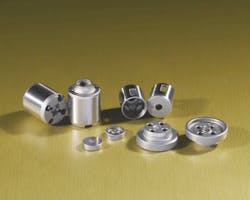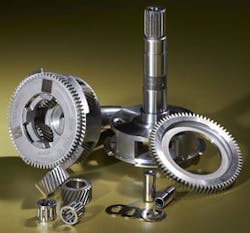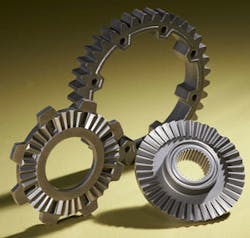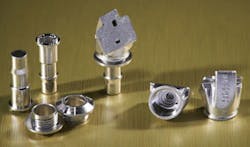Powder-metallurgy (PM) processes, including metal injection molding (MIM) and conventional press-and-sinter technology, are indispensable for production in industries like automotive. That’s because PM processes generate complex parts in far less time than machining and in larger quantities.
Engineers can create complex designs for PM parts that cut weight from machined alternatives. Meanwhile, additive-manufacturing methods try to accomplish the same feats, but PM processes continue to prove higher strength and quality than 3D-printed counterparts.
To recognize companies pushing the envelope with PM manufacturing, the Metal Powder Industries Federation, Princeton, N.J., recently awarded 14 prizes at the 50th anniversary Powder Metallurgy (PM) Design Excellence Awards competition. The event was held at the 2014 World Congress on Powder Metallurgy & Particulate Materials earlier this summer. All five Grand Prize winners and nine Award of Distinction winners touted the cost-saving benefits of producing PM parts.
Grand prize in the automotive — engine category
Indo-US MIM says this could be the most-complex, high-volume assembly ever made by MIM. It’s 35% less expensive than traditional versions, plus performs better. MIM lets engineers modify hole geometry to enhance flow dynamics for a 10 to 20% boost in fuel economy. The most complicated part, the blank discharge check, has intercrossing holes made by a machine using tooling with six side cores — three of which move independently.
Grand prize in the automotive transmission category
Keystone estimates the assembly is 25% less expensive than traditional alternatives. It’s been in production for more than two years, with about a quarter of a million assemblies shipped, and none have been returned.
Before joined to the shaft, Keystone compresses the spider and carrier plate and sinter-brazes them together. They also sinter-forge the helical pinion gears to full density using tools that rotate to match the gears’ 24.5° angle.
Grand prize in the lawn-and-garden and off-highway category
Capstan makes the two parts in 11 pressing levels. Precisely timed ejectors and sophisticated robotics help get the parts out of punches without cracking them. Despite design complexity, the manufacturer forms these parts to net shape, and special sintering fixtures maintain flatness and level-to-level relationships.
Grand prize in the medical and dental category
Previous versions of the tool didn’t include any MIM parts, but now all of the parts are MIM. The parts are 17-4 PH stainless steel, yet they don’t have any of the molding and processing limitations of previous models. More specifically, MIM gives the manufacturer a fixed tine with a very precise length and rib width. MIM also makes tines that are straighter than the old tines. FloMet uses thermal processing to finish the tines, and ConMed gets them preassembled.
Grand prize in the electronic and electrical components category
FloMet won another award for a three-piece net-shaped audio assembly, made for microphone and audio-equipment manufacturer Shure Inc., Niles, Ill. The parts — made by MIM from 316L stainless steel — include a nozzle interface, outer nozzle, and metal collar that go into high-end sound-isolating earphones. (The earphones are unique in that they let the user customize frequency responses.)
FloMet must make the net-shape parts low cost (so the earphones aren’t overly expensive) but still cosmetically pleasing with a clear exterior. Here, MIM works better than traditional manufacturing because it’s unlikely to get enough precision out of die-cast or machined parts, and still keep costs down. Plus, such processes wouldn’t meet the application’s material-performance requirements.
To see the nine Award of Distinction winners, click here.
About the Author
Lindsey Frick
Associate Editor
Lindsey has been an Associate Editor for Machine Design since 2012. She holds a Bachelor of Science in mechanical engineering from Cleveland State University. Prior to joining Penton, she worked in product design, packaging, development and strategy, and manufacturing. She covers the materials market and other areas of interest for design engineers such as 3D printing and methods to operate efficiently.





